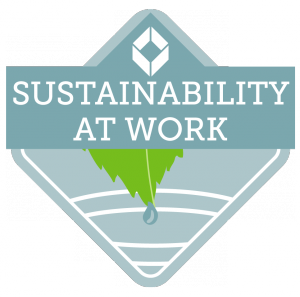
The Best of Diverted Intentions
In the policy realm disposal bans are used as a mechanism to divert material from disposal facilities and to drive reuse, recycling, composting or alternative types of recovery. The zero waste movement has picked up this idea and run with it. No one disputes that as a long-term strategy to conserve resources, striving to divert waste from disposal is of prime importance. But of equal importance, and often overlooked while developing and implementing diversion programs, are clear definitions of what outcomes are important. So what are the desired outcomes of a diversion program? What are the measures of success and are they tied to the correct outcomes? How do we track recovered materials, their disposition and report transparently on them? These are just some of the unanswered questions that have come up as we have reviewed diversion policies, good and bad, over the years. Since funds are seldom available to remedy a policy once it is in place, it is important to get it right the first time. Fortunately, there is an increasing body of experience and research that shows when diversion policy works well to support recycling and when it doesn’t work so well.
Diversion policies are most successful when they are clear, specific and targeted to materials with a value proposition. Driving materials out of disposal facilities that have no higher or better use or cannot be effectively sorted is a recipe for creating waste with a much higher resource footprint than direct disposal. Recycling is a subset of diversion. If recycling is a desired outcome of a diversion policy, it needs to be clearly defined both in terms of what it is and what it is not. This is important in order to understand if a diversion policy is succeeding, failing or having unintended consequences. For example, in some states diversion of construction and demolition (C&D) waste from a lined municipal solid waste landfill (i.e., Subtitle D landfill) to an unlined C&D landfill is considered recycling. I am pretty sure this was not the intended outcome of these diversion policies.
Riding the wave of economic expansion, many diversion goals in the US benefited from exporting collected recyclables to China over the past decade or so. However, now with the Green Fence this situation has changed. With a major shift to single stream collection of recyclables in US curbside programs during this same period and with ready overseas markets, more attention was paid to throughput than quality. The consequence today is that the quality of materials desired by many end users, recyclers, converters, and brands alike, is lacking. The question arises, in the well-intended desire to divert more and more, have we lost sight on outcomes around quality and economic value? Simply put – are we driving the targeted material to a legitimate higher or better use?
Let’s explore this idea further and drill down into local diversion policy. The desire to divert more from disposal facilities and put more into the recycling bin has been growing. The drive for diversion has come from municipalities, corporations anxious to have their materials recovered and consumers concerned about non-recyclable materials. As an example, some cities and municipalities have adopted diversion policies that encourage inclusion of a wide range of plastics. Companies large and small have reinforced this with plastics policies or requirements of their own. Often communities implemented these policies with the hope that more plastics with viable end markets would be collected but also with recognition that along with those plastics more material would be collected only to become residual because it currently has no end market. Oftentimes, the rationale for these diversion policies is to enhance consumer convenience and to drive aggressive zero waste goals. However, these diversion policies have driven material recovery facilities to process more low value materials with limited end markets. The consequence is that it ultimately raises processing costs, reduces overall bale values due to higher contamination, and increases quantities and percentages of residuals. If it continues, this lack of alignment between diversion and recycling will make alternatives like mixed waste processing increasingly attractive – an unintended consequence that will not be in the best interest of companies that are hungry for high volume of clean recyclables. Fortunately there are best practice technologies, policies and business strategies that are available to remedy this development – but only if we work together to implement them.
So to be clear, diversion does not always lead to recycling, but recycling is an outcome of diversion. Focusing on diversion without the correct policies and reporting in place can have greater negative consequences than disposal, which is why clearly defined outcomes and measures are so important. Additionally, diversion doesn’t always drive quality. Diversion policies designed with intention and an understanding of how they can align to meet the objectives of recycling can be a critical support to lead to better recycling performance, quality recycled material in the marketplace and higher or better use for that material. For diversion to meet this aim, corporate stakeholders and policymakers need a more informed perspective of how their decisions influence quality and economics within the recovery value chain. In addition, we could use far better collaboration between corporate stakeholders, policymakers, and a more unified industry perspective within the recovery value chain to define the standards for better recycling performance and quality as our waste streams become more complex — so there is finally a rule book for all to work from.
What do you think? Let us know in the comment section below!

